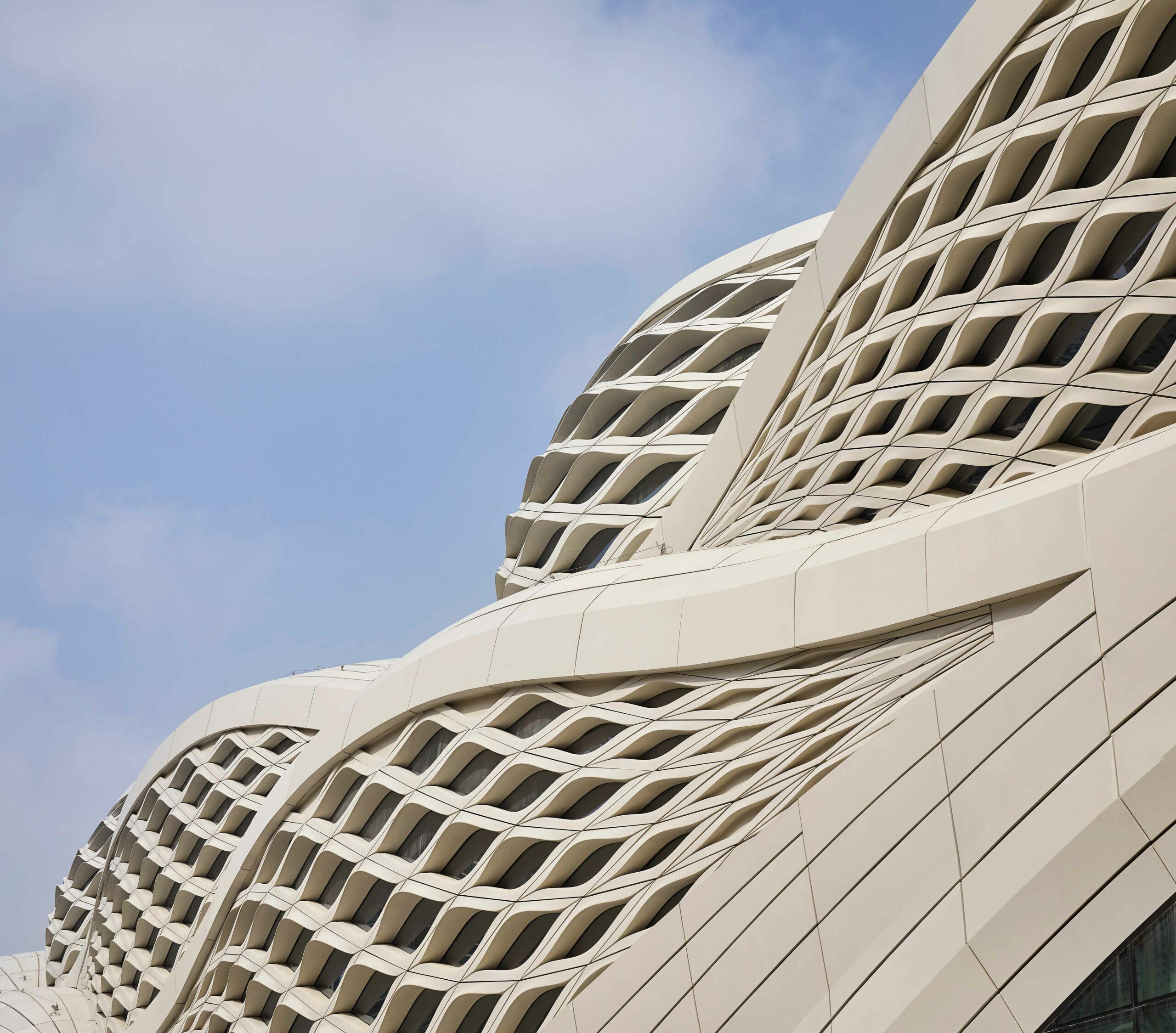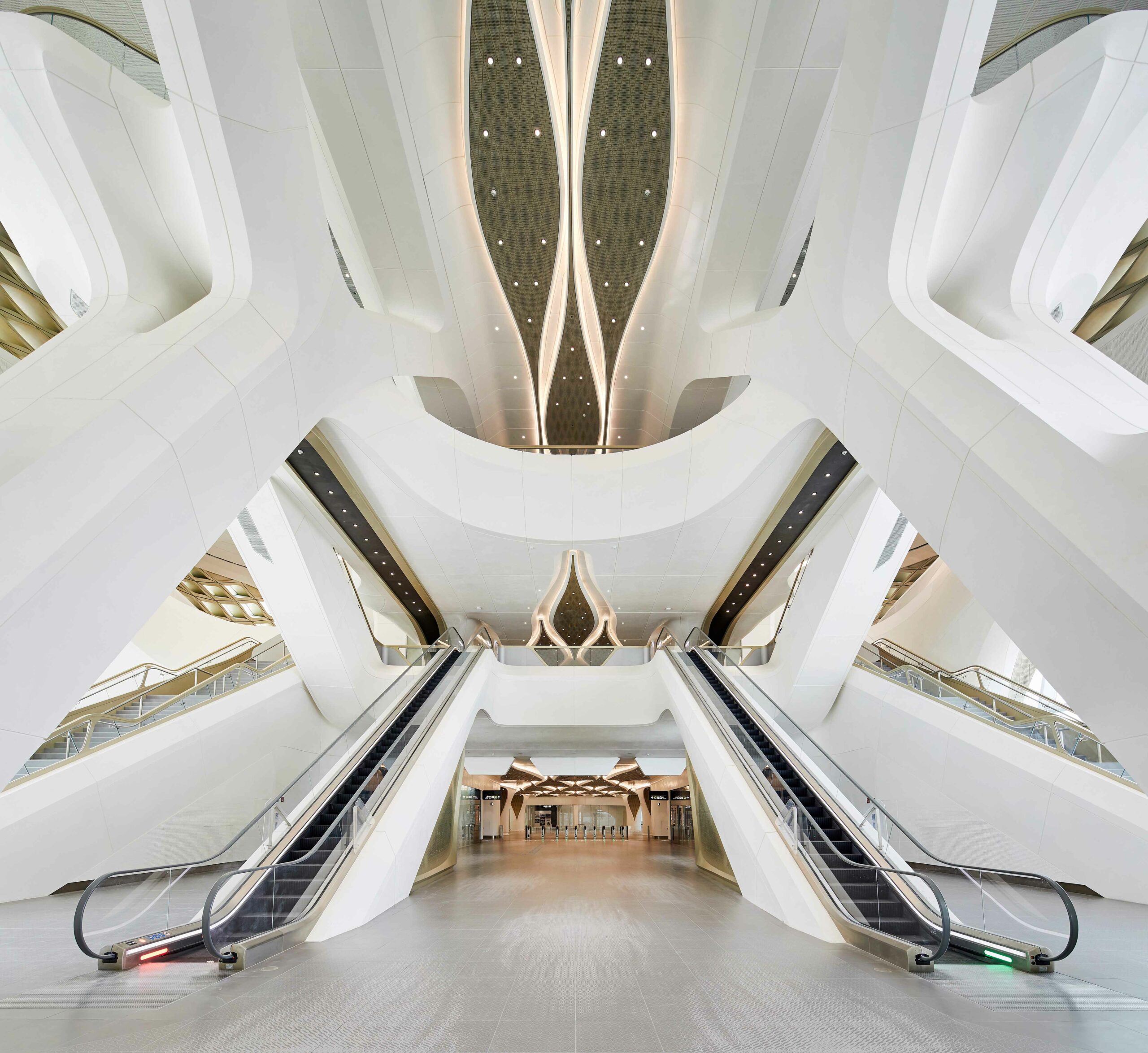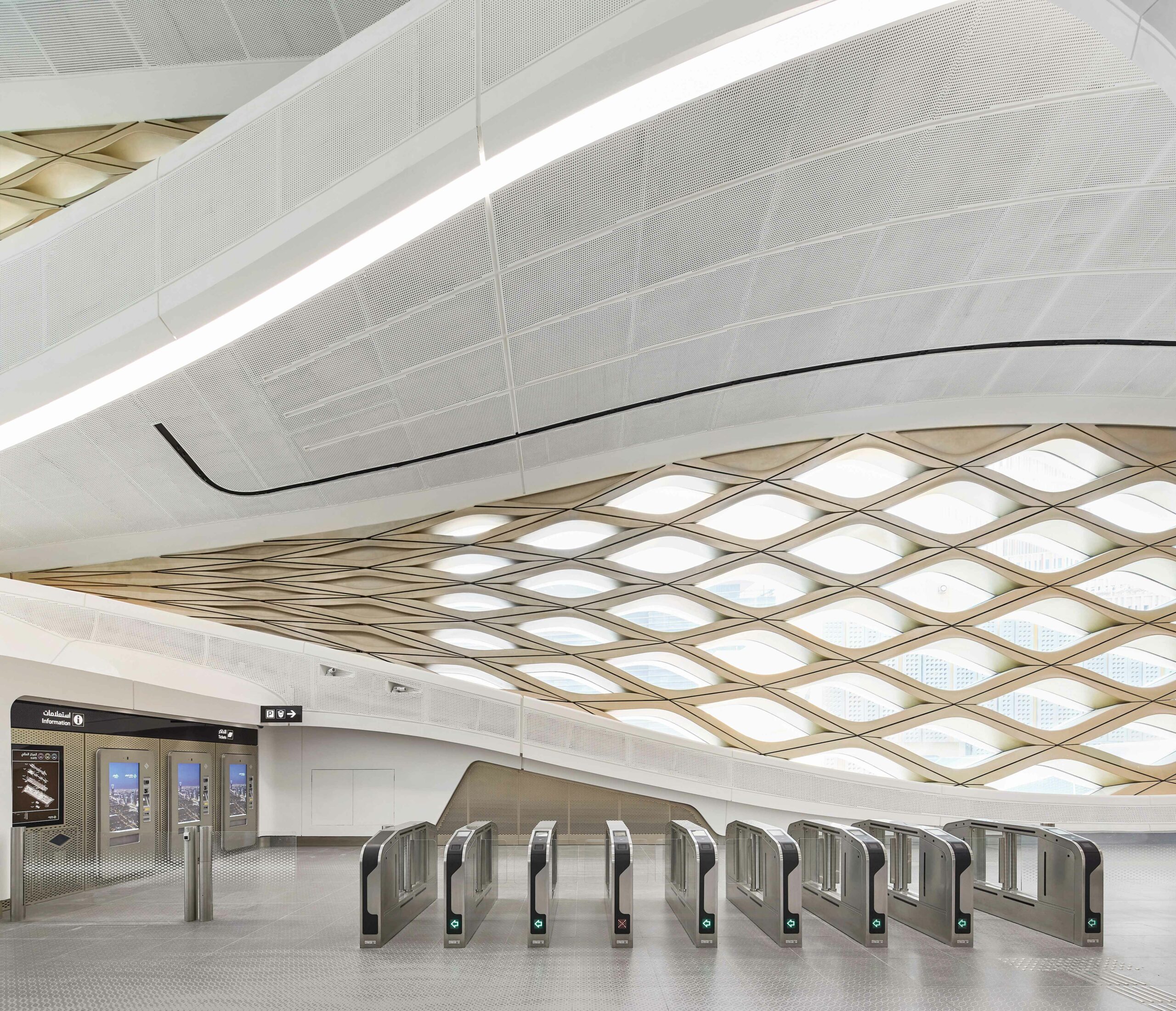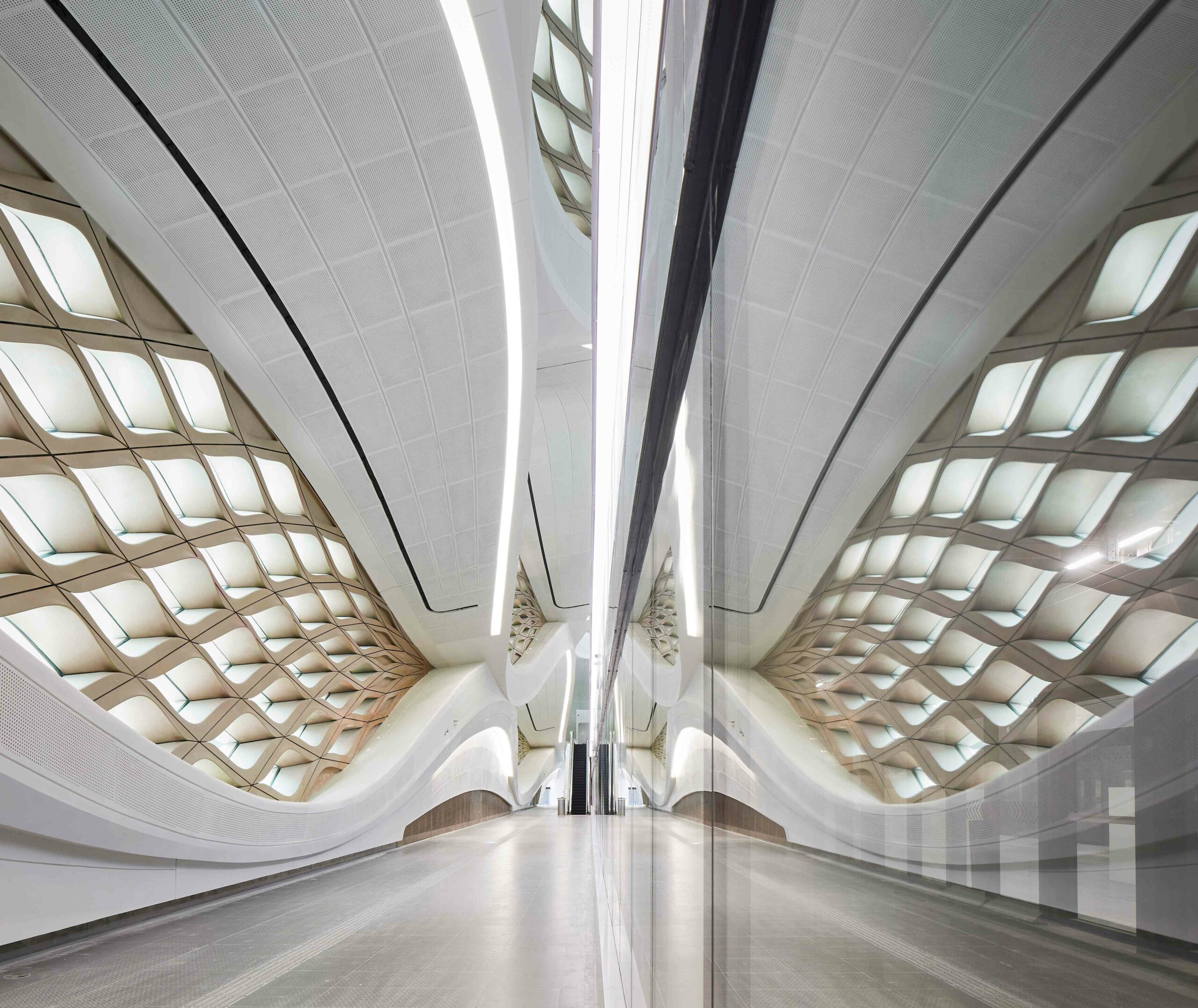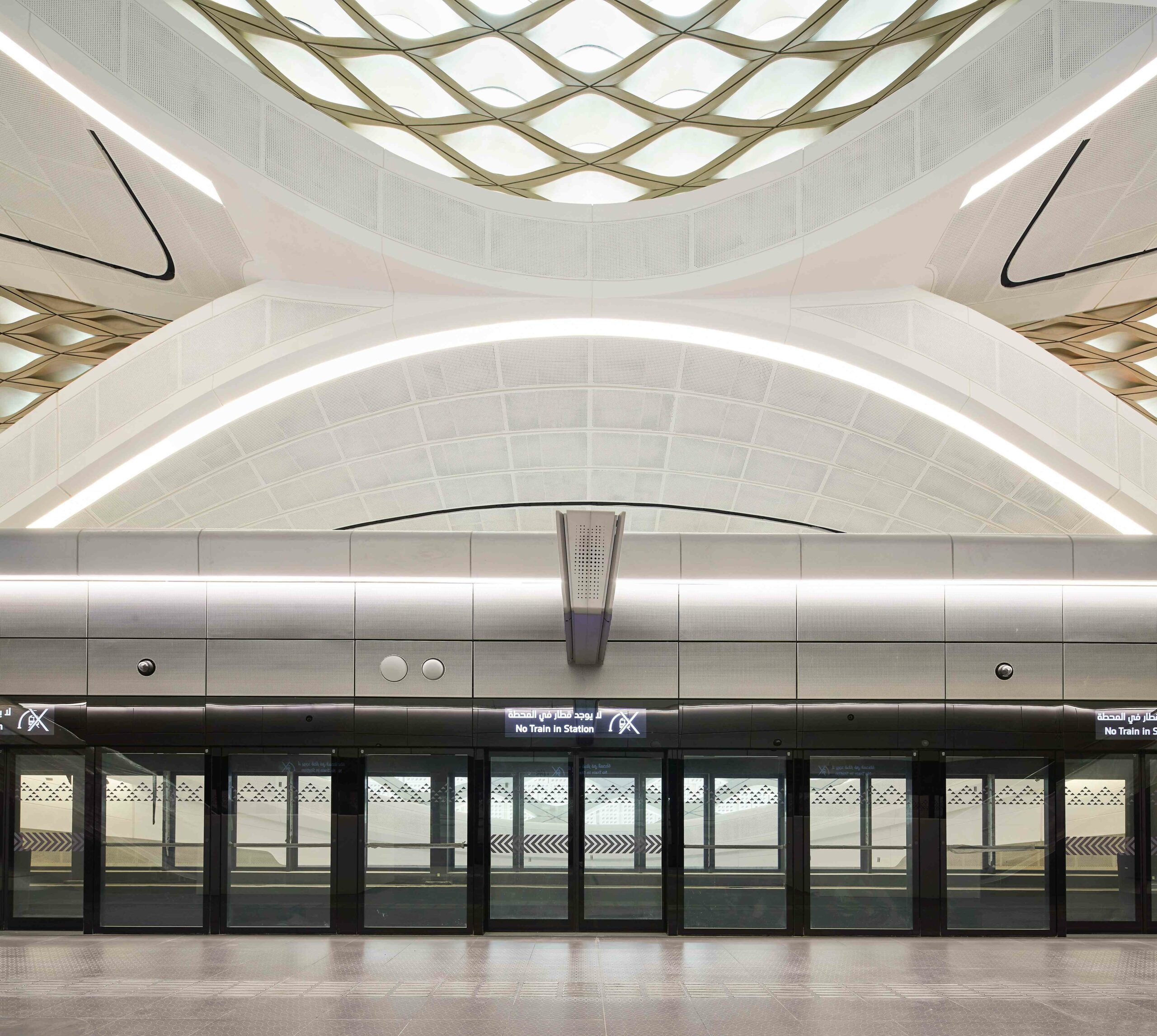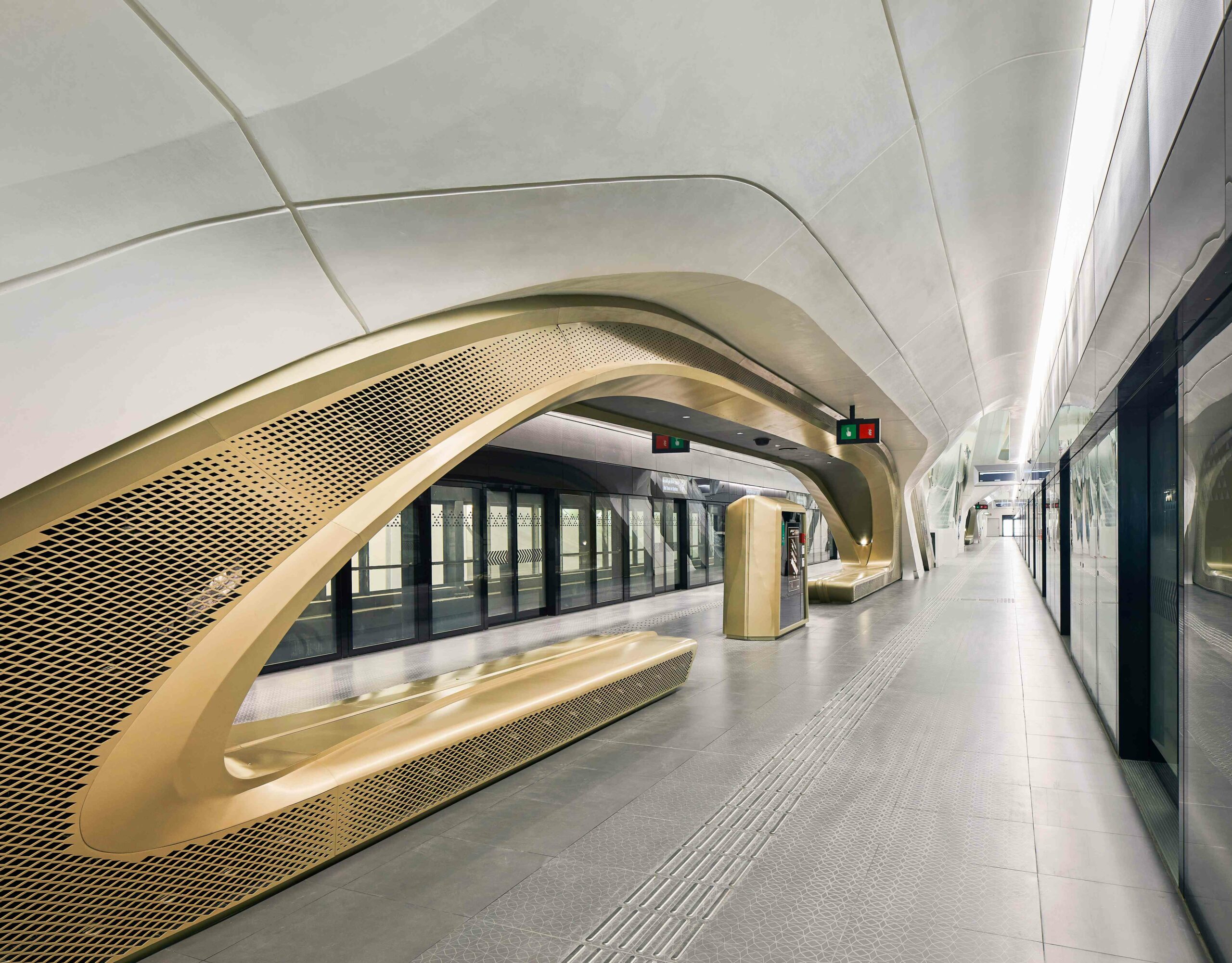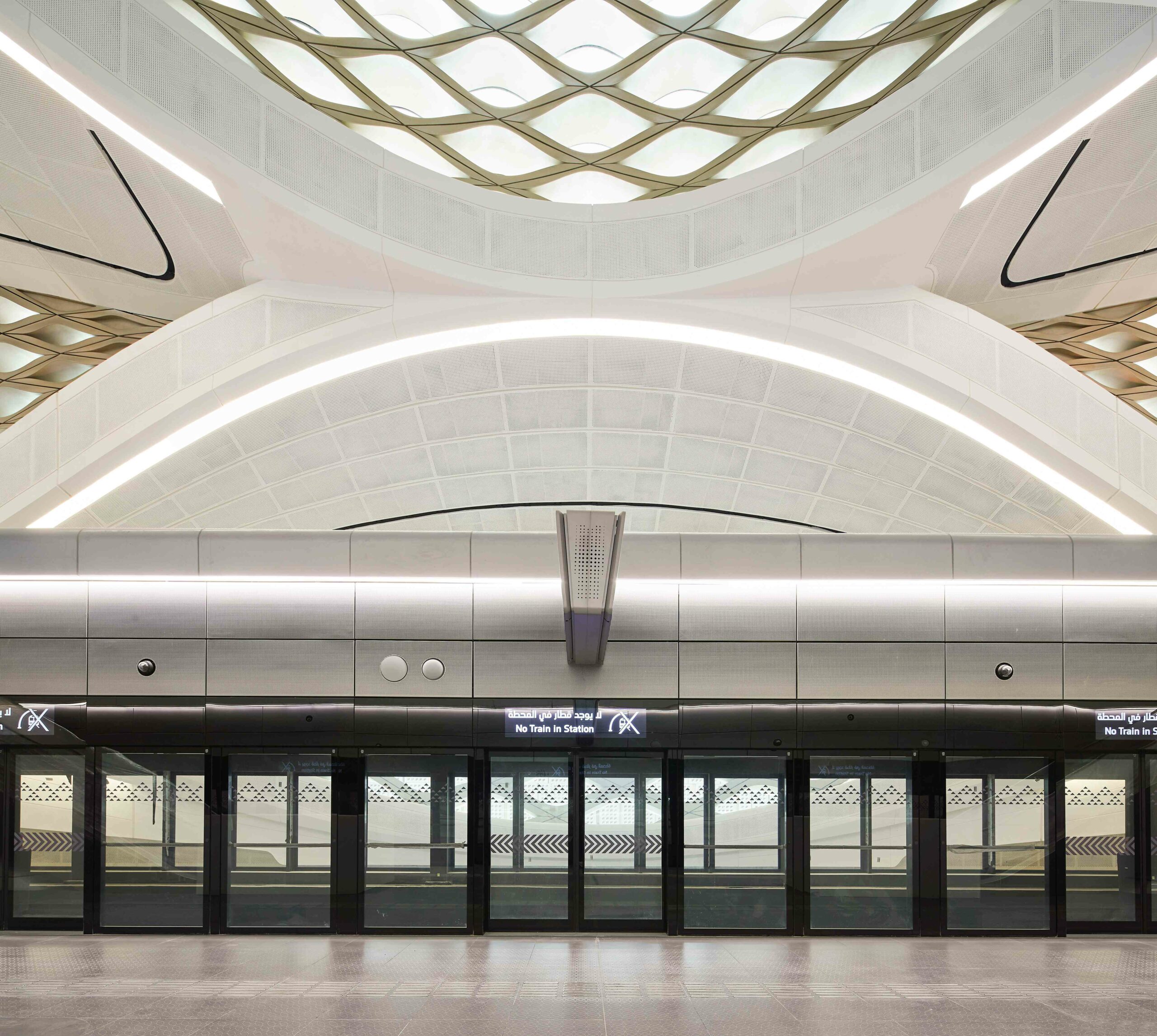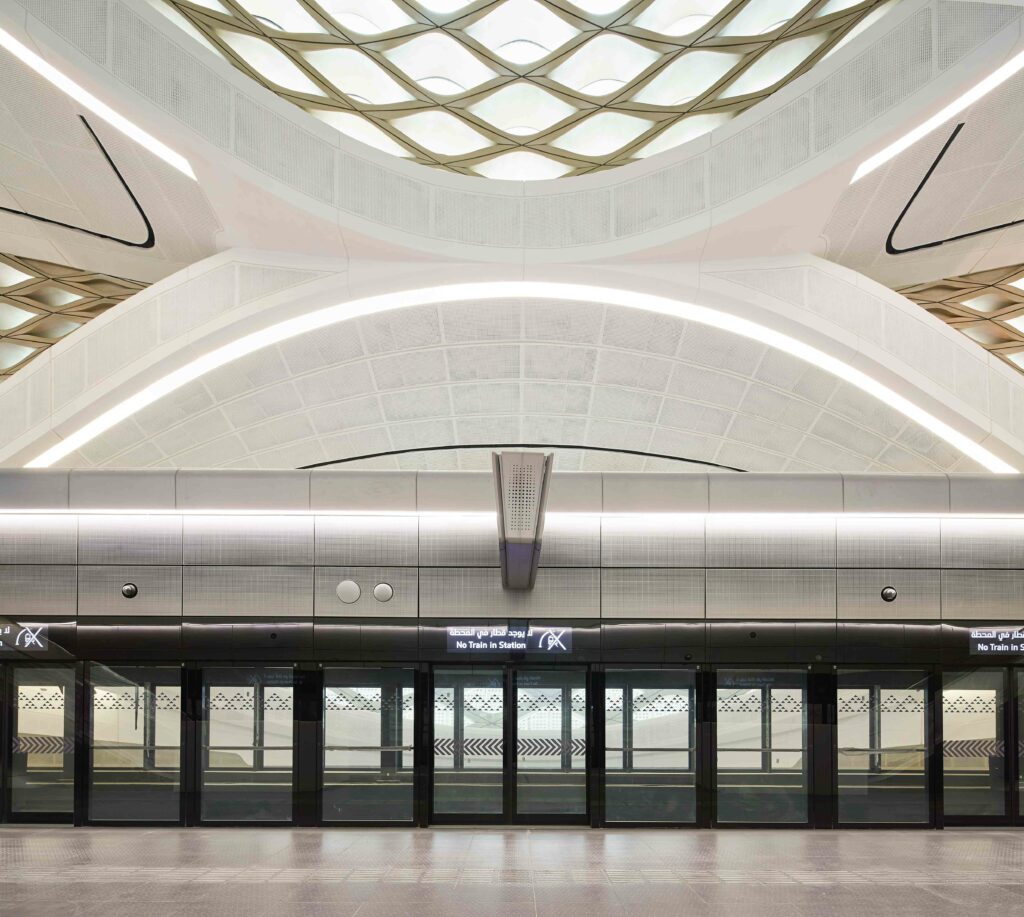- 6 December 2024
- 930 defa okundu.
New Transport Network in Riyadh by Zaha Hadid Architects: KAFD Metro Station
Designed by Zaha Hadid Architects, King Abdullah Financial District Metro Station was built as part of a 176-kilometre network to promote sustainable transport in Riyadh and create a transport hub integrated with modern architecture.
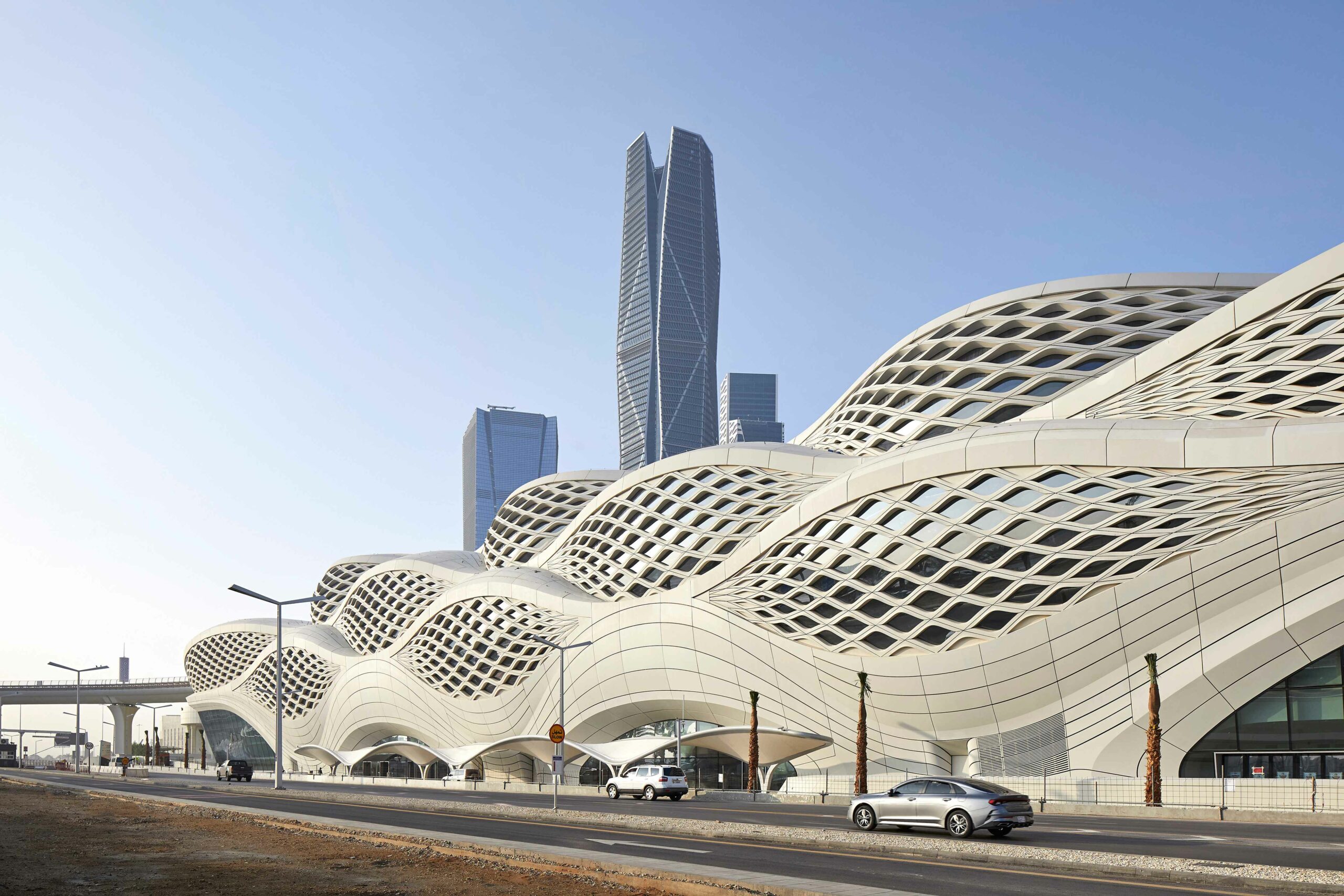
Fotoğraf: Hufton+Crow
The Riyadh Metro network, set to commence passenger operations on Sunday, December 1st 2024 with the opening of its Blue, Yellow and Purple lines (Lines 1, 4 and 6), will alleviate traffic congestion, shorten travel times and improve quality of life for Riyadh’s growing population.
As the world’s longest driverless transit system, the transformative network spans over 176 kilometres across 6 lines and 85 stations, connecting key districts, business centres, and cultural landmarks in Saudi Arabia’s capital city.


Fotoğraf: Hufton+Crow
An automated rapid transport system planned by the Royal Commission for Riyadh City (RCRC), Riyadh Metro will meet the needs of residents and visitors alike.
With a capacity of 3.6 million daily passengers, the network will reduce the number of car journeys throughout the city and encourage the use of sustainable modes of transport.


The King Abdullah Financial District (KAFD) Metro Station, designed by Zaha Hadid Architects (ZHA), serves as the key interchange on the new network, connecting the KAFD terminus, King Khalid International Airport, and providing access to the skybridge for the local KAFD monorail.
The station’s six rail platforms over four levels connect with bus and park-and-ride services to create an important multi-modal transport hub for the city, as well as new indoor and outdoor public plazas for the financial district.


Fotoğraf: Hufton+Crow
Contributing to the identity of Riyadh’s new metro system, the KAFD Metro Station’s design prioritizes connectivity. The station’s predicted rail, car and pedestrian traffic has been modelled, mapped and structured to optimize internal circulation and avoid congestion.
The resulting configuration is a three-dimensional lattice defined by a sequence of opposing sinewaves (generated from the repetition and frequency variation of the station’s daily traffic flows), which act as the spine for the building’s circulation.


Fotoğraf: Hufton+Crow
These sinewaves extend to the station’s exterior clad in ultra-high-performance concrete panels. The façade’s geometric perforations reduce solar gain as a contemporary reinterpretation of traditional environmental sheltering within the region’s vernacular architecture.
The composition of the station’s façade echoes the patterns generated by desert winds in sand, where multiple frequencies and reverberation generate the complex repetition of patterns evident in the natural world.


Fotoğraf: Hufton+Crow
The KAFD Metro Station is composed as a set of elements that are highly correlated through repetition, symmetry and scale.
The design was continually optimized by ZHA throughout its development to increase structural efficiencies and environmental performance while also simplifying the construction process without compromising spatial quality; seamlessly integrating the self-supporting structure of its external envelope with the station’s internal structure which supports the train platforms and viaducts.


Fotoğraf: Hufton+Crow
Providing optimal comfort at minimum energy demand, the station combines effective passive design features with a high-efficiency cooling system that is powered by renewables and automatically adjusts to differing passenger levels throughout the day, while sliding door panels on each platform retain cool air within the station.
The KAFD Metro Station has achieved Leadership in Energy and Environmental Design (LEED) Gold certification by the US Green Building Council.


Fotoğraf: Hufton+Crow
The world’s longest driverless transit system, the Riyadh Metro network spans over 176 kilometres across 6 lines and 85 stations.
With a capacity of 3.6 million daily passengers, Riyadh Metro will reduce the number of car journeys throughout the city and encourage the use of sustainable modes of transport. Designed by Zaha Hadid Architects, the King Abdullah Financial District Metro Station serves as the key interchange on the network.
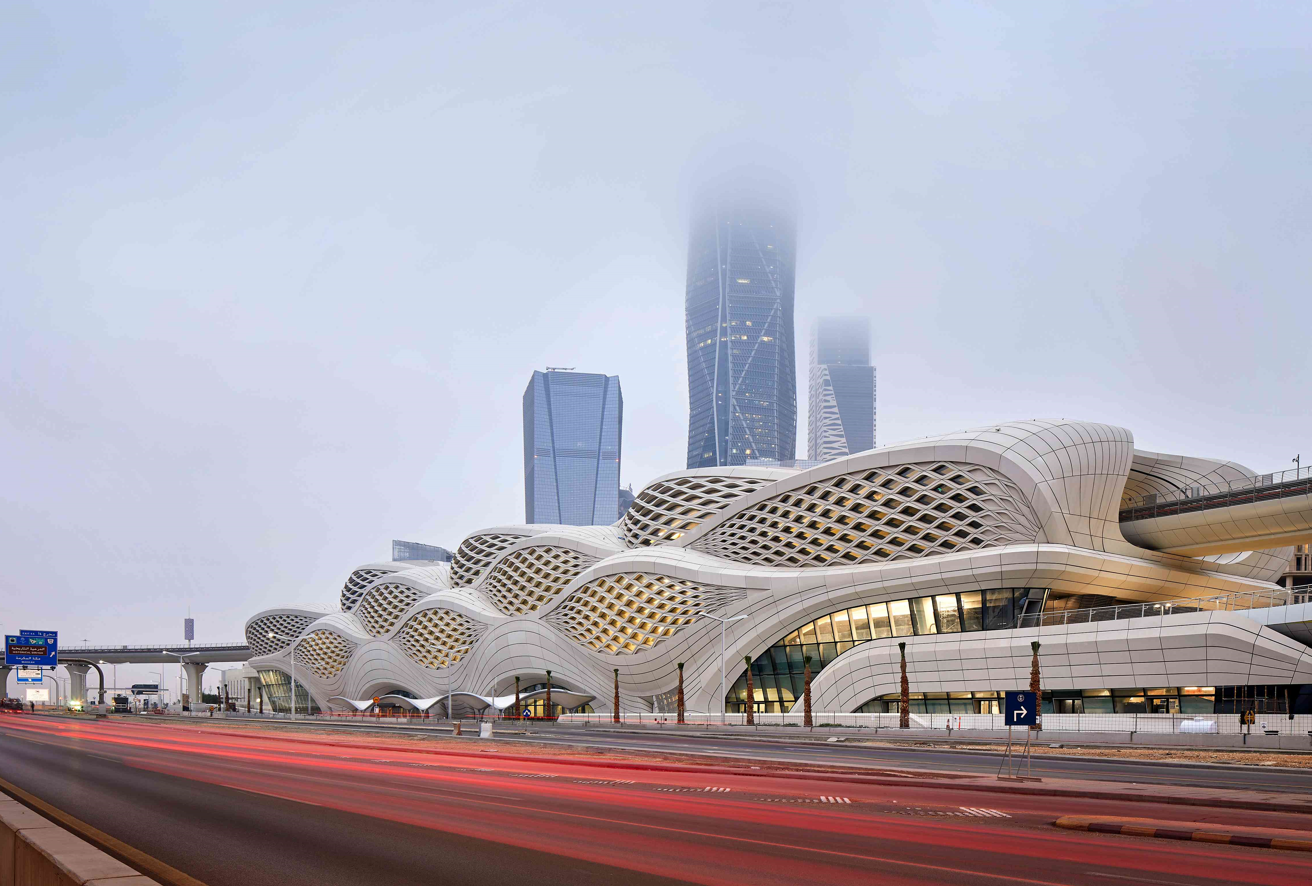

Fotoğraf: Hufton+Crow



